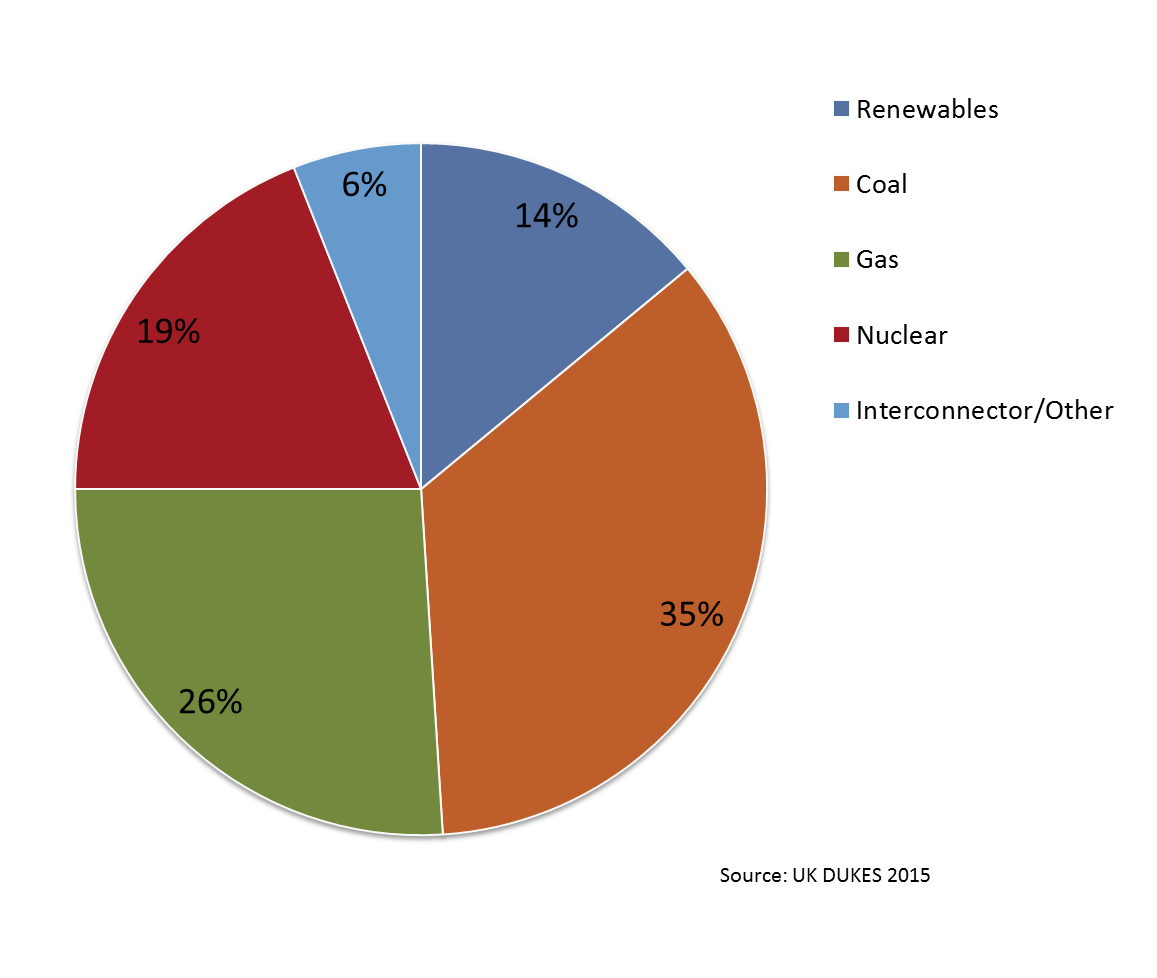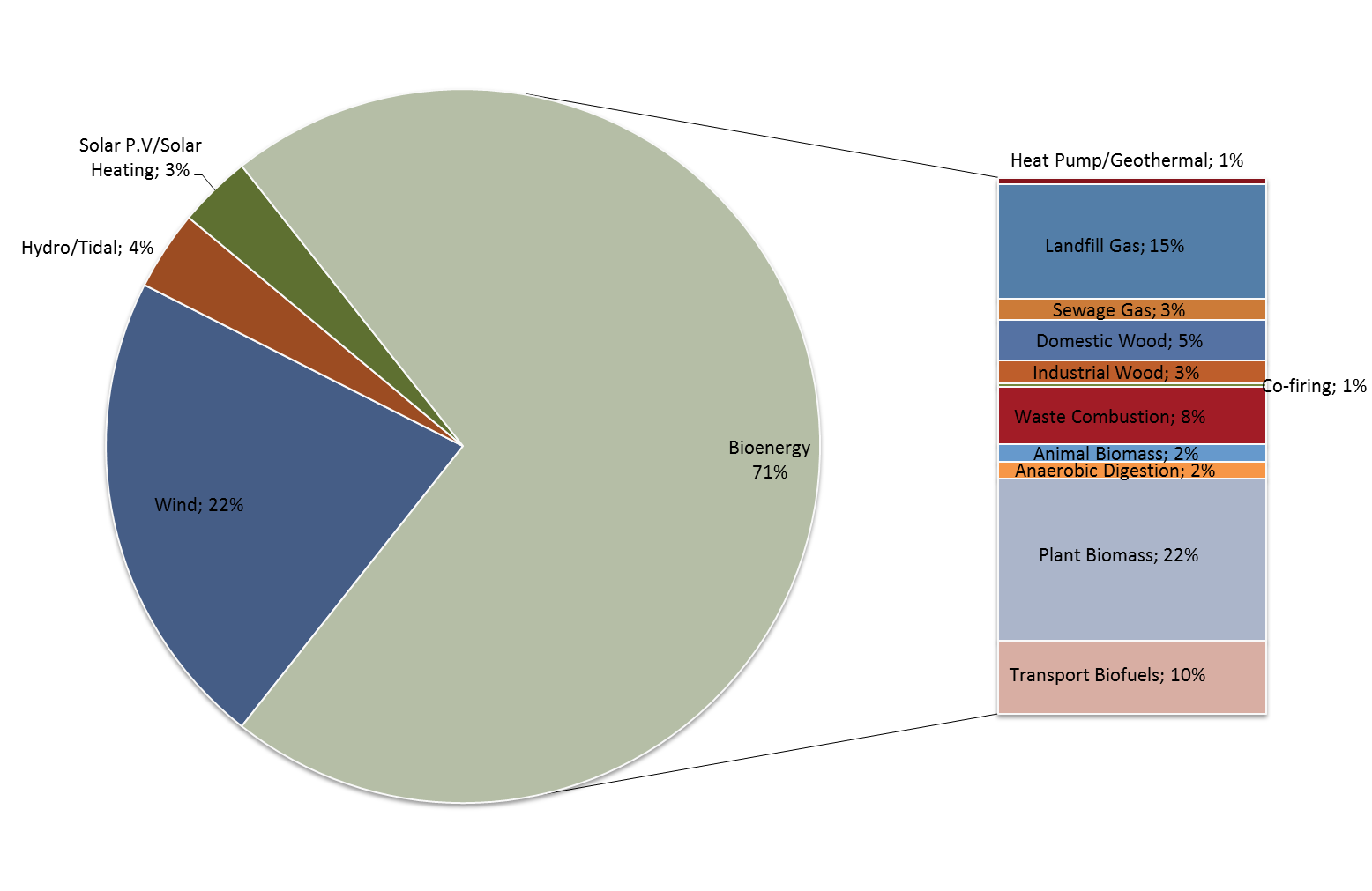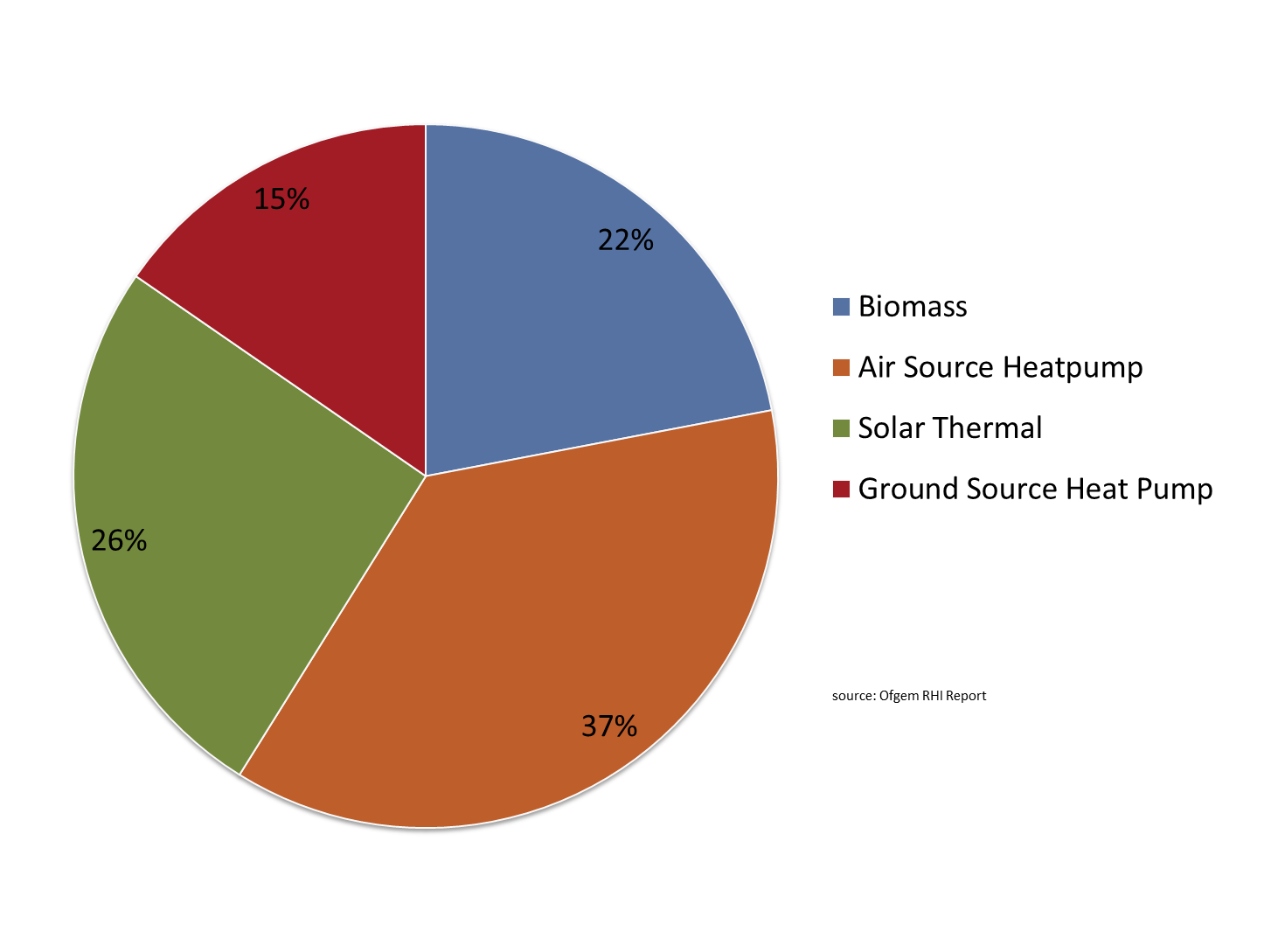Introduction
At the start of 2015 the UK’s overall energy production was 1.5% lower than it had been in 2013. The UK is still heavily reliant on importing its energy (46%). A switch to more sustainable energy production is therefore required.
The above pie chart indicates that renewables accounted for 14% of UKs overall energy production. The UK is aiming for renewable energy sources (RES) to take up 30% of total energy production by 2020.
Heating and cooling in figures
Between 2012 – 2013, there was a 7% increase in energy generated from renewable heat sources, broken down to the following;
 The majority of the UK’s heat demand (64%) comes from six key industrial sectors including; oil refineries, basic metals, food and drink, pulp and paper, non-metallic minerals (including ceramics, cement and glass), and chemicals.
The majority of the UK’s heat demand (64%) comes from six key industrial sectors including; oil refineries, basic metals, food and drink, pulp and paper, non-metallic minerals (including ceramics, cement and glass), and chemicals.
Around 14.8 TWh of heat was generated from renewable sources, an increase of 7% on 2012. However, this increase in generation was met with an overall increase in heat demand. Consequently, the overall proportion of heat delivered from renewable sources remains low at 2.3% and a long way off the UK’s 2020 target of 12%.
Biomass and solar thermal remain key renewable heat technologies, while the contribution of heat pumps is increasing. However, renewable contribution remains minimal in the cooling sector where there remains a heavy reliance on traditional electric technologies.
Support Schemes and Best practices
The Renewable Heat Incentive (RHI) is a UK Government scheme set up to encourage uptake of renewable heat technologies amongst householders, communities and businesses through financial incentives. It is the first of its kind in the world and the UK Government expects the RHI to contribute towards the 2020 ambition of 12% of heating coming from renewable sources. So far RHI has;
• 10,000 accreditations for the Domestic Renewable Heat Incentive (RHI) in less than six months of the scheme being opened.
• Paid more than £1m to those who have been accredited & expecting to pay approximately £120m for the first 10,000 accreditations over the next seven years
The breakdown of technologies as of (Dec, 2014)
About us
As one of the Energy Agencies involved in the project – the Energy Saving Trust is responsible for communicating clear and transparent information to end users about the project. This includes the dissemination of tools developed by project partners, to help end users understand cost implications when investing in renewable versus non-renewable energy technologies.





